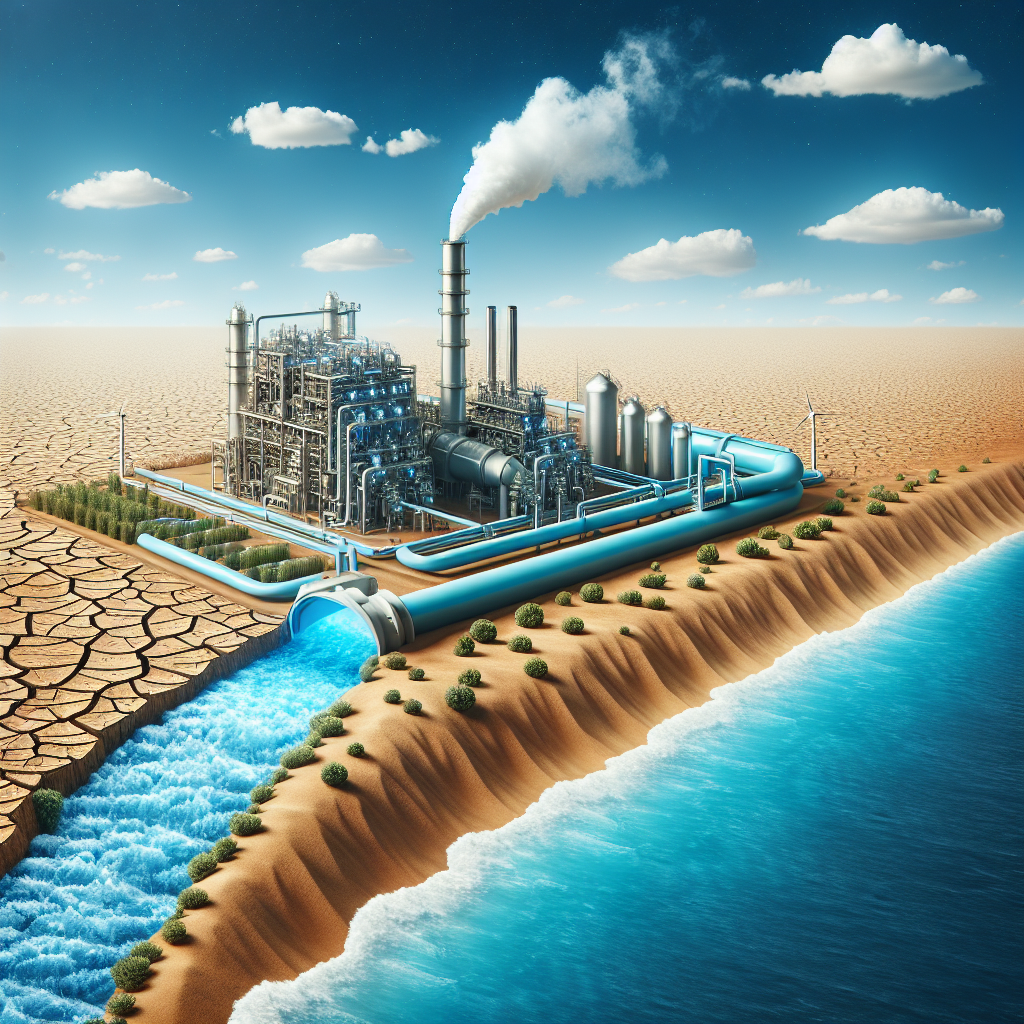Desalination: A Controversial Solution to Water Scarcity
As the world grapples with the escalating crisis of water scarcity, desalination has emerged as a beacon of hope for many drought-stricken regions. This process, which transforms seawater into potable water, carries the promise of an inexhaustible supply of life’s most essential resource. However, the deployment of desalination technology is mired in controversy, with debates raging over its environmental impacts, economic viability, and long-term sustainability.
Understanding Desalination
Desalination refers to a group of technologies that remove salt and other minerals from saline water to produce fresh water suitable for human consumption or irrigation. The most common methods include reverse osmosis (RO) and multi-stage flash distillation (MSF), both of which have been successfully implemented in numerous countries, including Saudi Arabia, Israel, and Australia.
The Appeal of Desalination
The allure of desalination lies in its potential to provide a reliable, drought-proof water source. For countries with limited freshwater resources but abundant coastlines, desalination offers a way to meet the growing demand for water without over-exploiting rivers, lakes, and aquifers. Moreover, advancements in technology have led to significant reductions in the cost and energy requirements of desalination, making it an increasingly attractive option for water-stressed regions.
The Controversies Surrounding Desalination
Despite its benefits, desalination is not without its detractors. Critics point to several key issues:
1. Environmental Impact: The desalination process produces a byproduct known as brine, which contains high levels of salt and chemicals. Discharging this concentrate back into the ocean can harm marine ecosystems, affecting biodiversity and potentially disrupting local fisheries. Additionally, desalination plants are energy-intensive, contributing to greenhouse gas emissions unless powered by renewable energy sources.
2. Economic Concerns: Desalinated water is often more expensive than freshwater from conventional sources, primarily due to the high energy consumption of the desalination process. This cost factor can make it a less viable option for poorer countries or regions, exacerbating social and economic disparities.
3. Energy Use: Desalination is one of the most energy-intensive methods of water supply, raising concerns about its sustainability in an era of increasing energy prices and the urgent need for carbon reduction. While technological advancements have improved energy efficiency, the process still requires significant amounts of electricity, often sourced from fossil fuels.
Addressing the Challenges
To mitigate the environmental and economic concerns associated with desalination, several strategies are being explored:
– Innovations in Technology: Researchers are developing new methods of desalination, such as forward osmosis and graphene filters, which promise lower energy consumption and reduced environmental impact.
– Renewable Energy Integration: Pairing desalination plants with renewable energy sources, such as solar or wind power, can significantly reduce carbon emissions and operational costs.
– Improved Brine Management: Efforts are underway to find sustainable ways to manage brine, including mineral extraction for industrial use and dilution strategies to minimize ecological harm.
– Policy and Regulation: Implementing strict environmental regulations and incentivizing the adoption of greener technologies can help ensure that desalination practices are sustainable and environmentally friendly.
The Future of Desalination
As the world’s water crisis intensifies, the role of desalination in global water security is likely to grow. However, its expansion must be carefully managed to balance the urgent need for fresh water with the imperative to protect our planet. By embracing innovation and stringent environmental standards, desalination can be part of a sustainable solution to water scarcity.
FAQs About Desalination
Q: How does desalination work?
A: Desalination works by removing salt and other minerals from seawater or brackish water, mainly through reverse osmosis or distillation, to produce fresh water.
Q: Is desalinated water safe to drink?
A: Yes, desalinated water is safe to drink. It undergoes rigorous treatment and testing processes to ensure it meets quality standards.
Q: Why is desalination controversial?
A: Desalination is controversial due to its environmental impact, high energy consumption, and the cost of producing desalinated water, which raises concerns about its sustainability and accessibility.
Q: Can desalination solve global water scarcity?
A: While desalination can significantly contribute to addressing water scarcity in coastal regions, it is not a panacea. A holistic approach, including water conservation, efficient use, and sustainable management of existing freshwater resources, is essential.
Q: Are there sustainable alternatives to traditional desalination methods?
A: Yes, there are emerging technologies and methods, such as forward osmosis, graphene filters, and renewable energy-powered desalination, which offer more sustainable alternatives to traditional desalination techniques.
Desalination represents a promising yet complex solution to the global water crisis. As technology advances and our understanding of its impacts deepens, it remains a critical, albeit controversial, component of the world’s water strategy. By addressing its challenges head-on, we can harness desalination’s potential while safeguarding our environmental and economic future.

